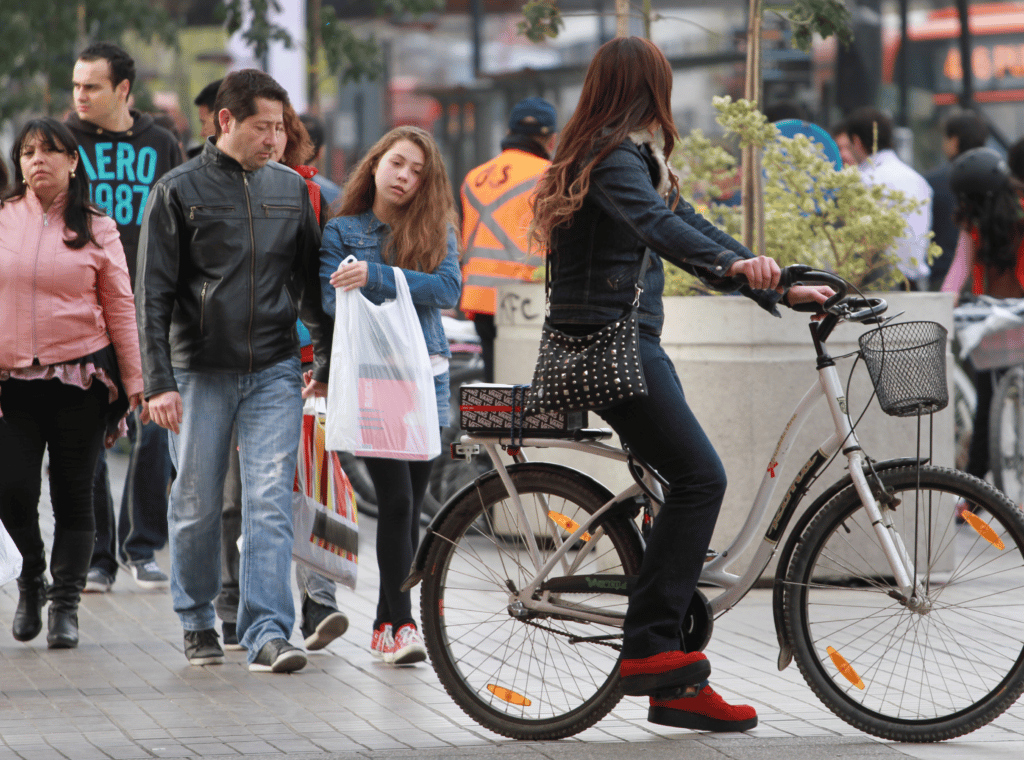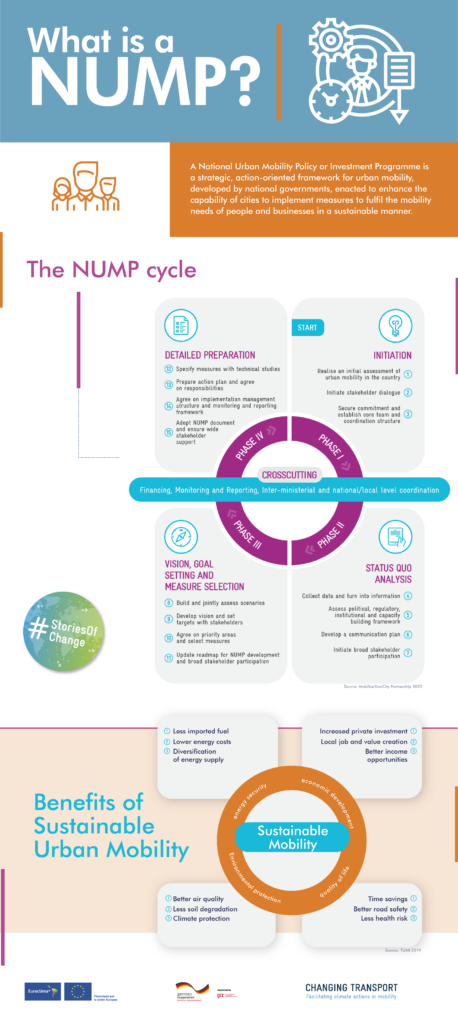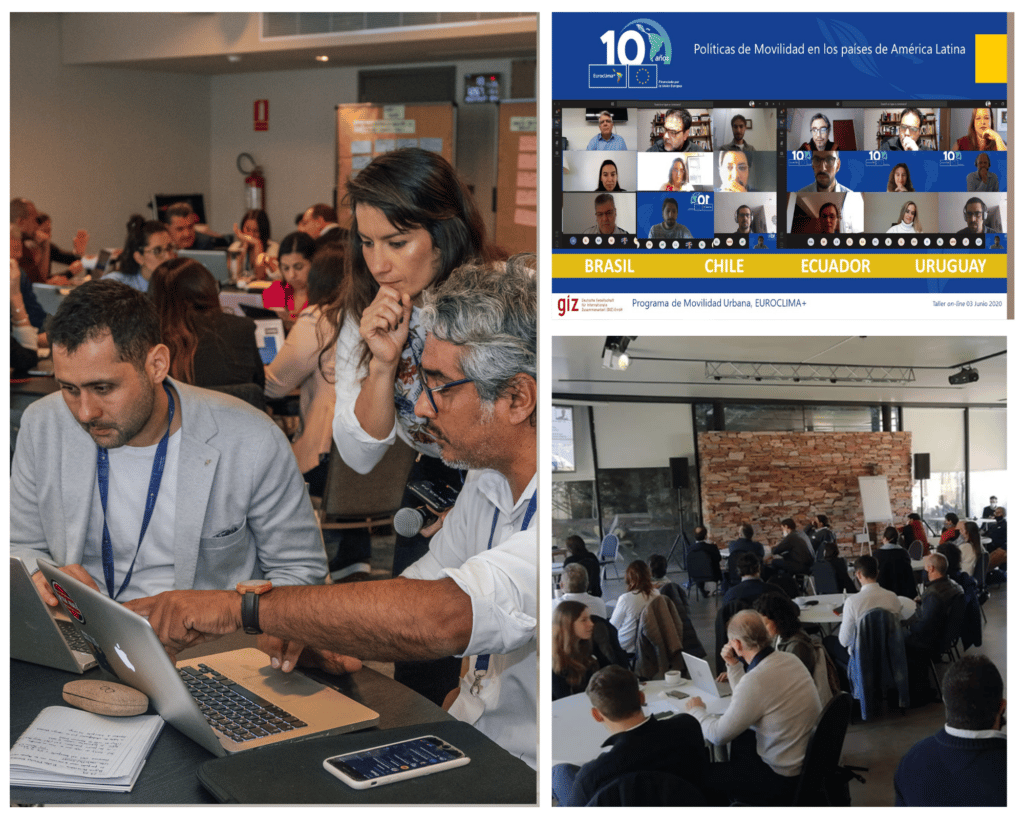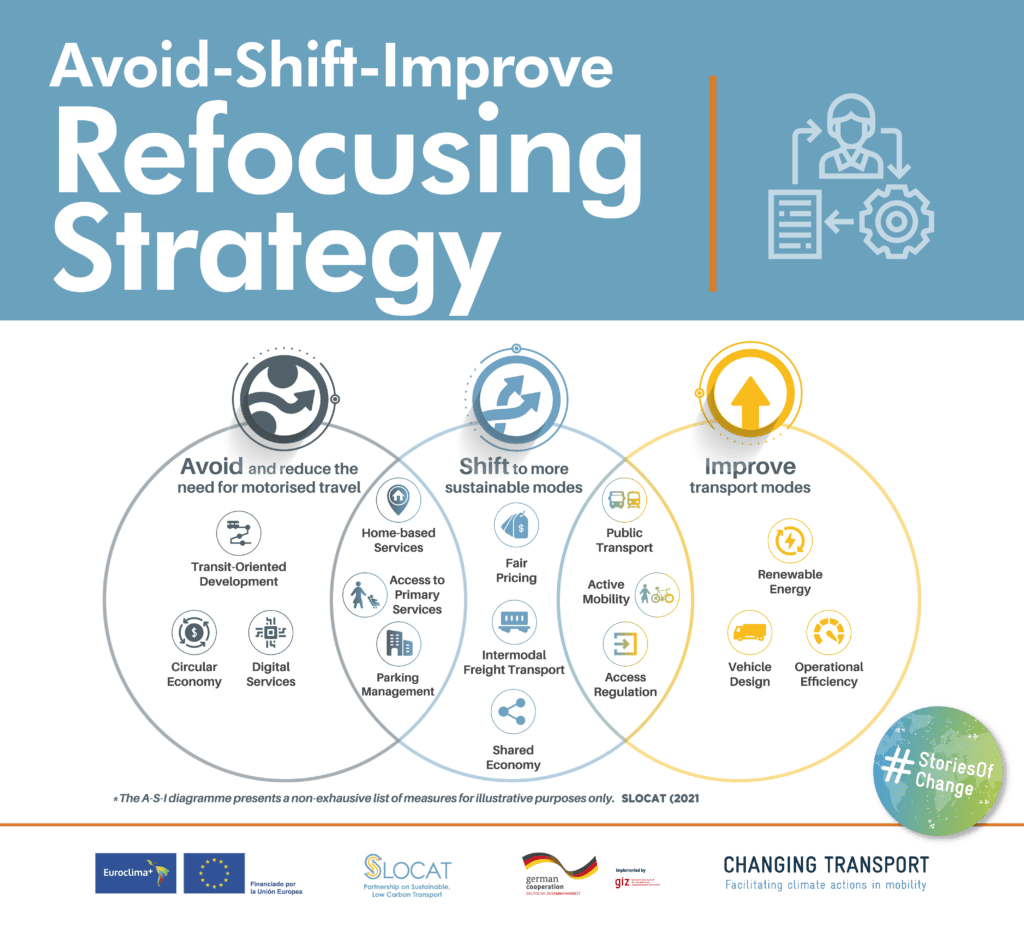
This article is part of our #StoriesofChange where we profile the work of our partner countries in developing climate actions in transport. Read more #StoriesOfChange and follow the Hashtag on Twitter.
In recent years, sustainable mobility solutions have flourished in several Latin American cities. On the one hand, bicycle travel in Santiago de Chile has increased 900% over the last ten years, with the total length of cycling paths reaching some 300 km (and growing). On the other hand, in Montevideo (Uruguay) the first 40 electric buses are now in operation, out of a targeted fleet size of 100.
Nearly seven years since the Paris Agreement, we have become more aware of the consequences of climate change and how urban mobility can be transformed to reduce emissions (e.g. by promoting cycling and by improving transport systems, among other measures). But are we achieving anything? Are we moving collectively in the right direction? Can the sum of our actions achieve real transformation?
This is where National Urban Mobility Policies and Programmes (NUMPs) play a crucial role. NUMPs enable us to develop a vision and set long-term goals for achieving sustainable development, aligned to the needs of each country.
How can a strong mobility ecosystem improve climate action? The following discussion shares the experiences of Chile and Uruguay – two countries which, in line with their national context and particularities, have developed NUMPs under the aegis of the EUROCLIMA+ programme.

MobiliseYourCity’s methodology provides a roadmap for the capacity-building process. This helps to ensure a high-quality NUMP that is aligned to a broader policy framework. However, stakeholder participation and ownership are crucial for a NUMP to become a reality beyond pledges on paper.
The NUMP guidelines are flexible, allowing piecemeal adoption to a specific context. Chile and Uruguay pursued a similar initial strategy – that is, to build on a baseline approach with an in-depth status-quo analysis, enriched by qualitative experience from directly involved actors. While Chile built on a series of workshop with practitioners from different ministries, advancing a “horizontal” approach to mobility, Uruguay decided pursue a bottom-up perspective, working with five cities.
Two initial questions were posed to guide collective analysis: How can I contribute to and participate in the urban mobility system? What is in my power to contribute to a solution? In this way, both countries defined the problem at hand while simultaneously identifying the roles involved in building a better transport model. This was achieved as part of a participatory process that captured the complexity of the topic.
We acted as a liaison between governance frameworks and actors in urban mobility, in order to engage actors and encourage them to elaborate pathways for long-term sustainability.
With national and municipal actors in Chile and Uruguay, respectively, this process not only encouraged the development of technical capacities, but also fostered a willingness to implement actions together.

Understanding the link between the national and municipal level is essential for the development of ready-to-implement policy. In these two countries, governance structures are very different. In the case of Chile, despite an ongoing national devolution process, the institutional framework for urban mobility is still very centralised. By contrast, in Uruguay, cities and intendencias (regional authorities) have total legal autonomy to establish their own strategies and policy frameworks in the domain of territorial planning and transport. Designing frameworks that allow efficient coordination and effective support from the national to the municipal level must take these very divergent national circumstances into account.
Originating from different styles of governance, both countries have defined policies focusing on how transport can be made compatible with sustainable development. On the one hand, Chile has developed a strategic framework for multisectoral horizontal cooperation. On the other hand, Uruguay is providing a perspective for cities to move towards a mobility system while leveraging vertical cooperation. This policy process has allowed the countries to empower mobility as an aspect of climate action and set goals connected to their NDCs. Furthermore, it has given mobility an important role in promoting sustainable transport as an aspect of green-growth and sustainable development. Linking the national level to cities enables the NUMP to be specific regarding policy guidelines for cities.
In such a diverse ecosystem of stakeholders, a clear working plan and good communication are crucial. In both countries, the “Avoid–Shift–Improve” model was placed at the centre of policy efforts, thus spotlighting the comprehensive action needed to achieve successful outcomes.

Staring a NUMP process is challenging. One issue of concern was to establish certainty for actors in a rapidly changing environment. As the transport ecosystem is in a dynamic state of change, some stakeholders questioned the need for a fixed policy framework. This underscores the need for a NUMP that is both agile and flexible. In this connection, adequate time must be devoted to establishing suitable organisational structures for steering the process.
Chile agreed on providing a financing structure to enable regions – at the intermediate level between national and municipal government – to implement sustainable mobility. Uruguay proposed the creation of a steering entity that would direct the process across sectors, in order to assist cities in implementing sustainable mobility. This steering entity was christened the Interinstitutional Sustainable Mobility Commission (CIMS).
These two NUMPs generate a vision, define objectives, and elaborate measures to be implemented. Some of the measures are to be implemented at the national level – however, in each city in which urban mobility takes place, permanent coordination is needed. Learning from the northern city of Antofagasta in Chile, a form of support adopted to make the transformation sustainable is to have local mobility plans (SUMPs). In this connection, the national government should provide encouragement and support. This is where flexibility comes on board, rather than a rigid legal framework. In this way, NUMPs are guidance structures that help to secure the sustainability of the transformation, connecting sustainable mobility to national targets, such as those arising from NDCs or the Sustainable Development Goals.

Implementing sustainable mobility crucially depends on answering two interrelated questions: What is the policy aim? And how can we achieve it? The NUMP defines the organisational structure for collaboration between sectors and between different levels (e.g. national, regional and local). By defining achievable measures in the domain of sustainable mobility, it ensures that developed targets are appropriate and realistic.
From this perspective, the NUMP should consider that the ecosystem is in flux and constantly evolving, and that the role of the NUMP is not to control, but rather to steer the development towards a collective vision and larger aims connected to sustainability. Actors should not only be involved to validate policy, but also to provide valuable information on real-world circumstances, governance cultures and roles, and to contribute to the development of organic and effective solutions.

In this way, the elaboration of a NUMP relies not only on capacity development and network building, but also on gathering information about real-world conditions, in order to identify a viable guidance pathway. Establishing a relationship with cities enable implementation, and highlights the role of the national level as a facilitator. Finally, the NUMP should have an agile and flexible framework, in order to ensure adaptability to novel or unforeseen circumstances.
Various “lessons learned” were generated by the simultaneous implementation of the NUMP process in both countries. On the one hand, it became clear that methodologies must be informed by a participatory process, in order to translate the methodological steps into practical contexts. This process should be designed to build capacities while also identifying relevant actors and the roles they should play in ushering in sustainability. The formation of a multisectoral group can help to make the journey from a theoretical framework to a specific reality, thus ensuring the NUMP is an instrument ready to be implemented, i.e. a policy that foresees specific measures, based on a larger vision. Flexible and agile management structures should be the aspiration of a NUMP, in order to enable policy adaptation during the process, and incorporate changes easily.

Both Chile and Uruguay now have NUMPs that are actively contributing to the promotion of sustainable mobility. In the case of Chile, a National Mobility Program is to be designed. This program will generate access to financial support for cities that are willing to initiate the process of implementing sustainable mobility. In addition, regional authorities and practitioners can benefit from capacity building measures, so that they can better understand how the National Mobility Strategy should be implemented. In this connection, a two-way dialogue is being pursued, with the national level providing assistance to regional and local actors; these actors, in turn, contribute their perspectives, according to realities on the ground.
In the case of Uruguay, a Country Dialogue is being implemented as part of the EUROCLIMA+ programme. The aim is to develop an institutional entity (the CIMS) and implement pilot capacity-building projects and local communities of practise that can be scaled up to the national level. Uruguay is showcasing the next step in the policy process, in order to enable implementation in a flexible and agile manner. In particular, active collaboration with municipal actors will be pursued to learn based on real-world experiences. A “learning group” will be formed to assist local mobility planning and pilot projects, in order to create a community of practise that can serve as a model in other jurisdictions, both nationally and across Latin America.
We invite you stay abreast of the policy achievements being made in Uruguay and Chile in the coming months and years, which may serve as a source of inspiration for the development of national mobility policy in your country.

If you believe that you suffer (potential) negative social and/or environmental consequences from IKI projects, or wish to report the improper use of funds, to voice complaints and seek redress, you can do so using the IKI Independent Complaint Mechanism.